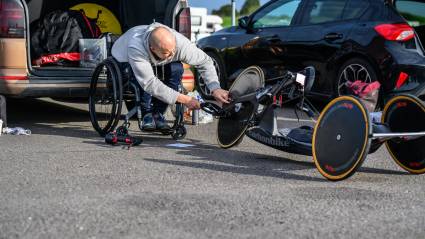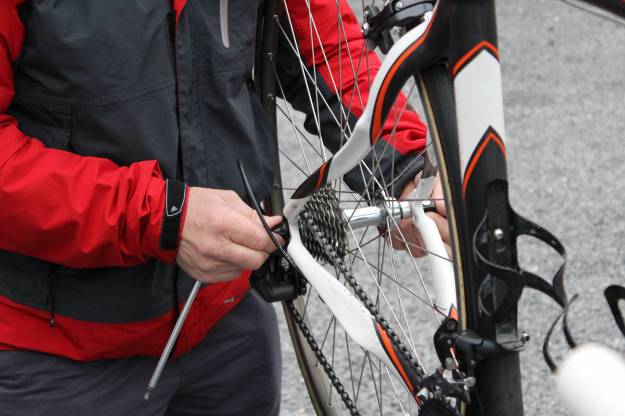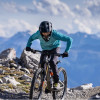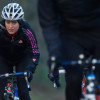Knowledge Level: Intermediate
Designed purely for speed and wind cheating aerodynamic performance, time trial bikes are the cycling equivalent of F1 technology. Every aspect of the bike is designed to reduce its resistance through the air.
Although the individual gain from a recessed seat-post clamp may be almost unmeasurable, every single small gain added together accumulates to significant time savings and, in races that are often won by fractions of a second, can make the difference between winner and also-ran.
Bars
The long forward facing extensions and elbow pads, also known as tri-bars, allow you to adopt a highly aerodynamic tuck position. Tri-bars came to prominence in 1989 when Greg Lemond controversially used them in the final time trial of the Tour de France and overhauled French favourite Laurent Fignon to win by the minuscule margin of 8 seconds. Since then, they have become standard on specialist time trial bikes and are fully integrated with the base bar.
Extensions are available in a variety of shapes from completely straight to upturned ski bends. Fashion and aerodynamic thinking seems to change from season to season but which you choose really boils down to comfort and personal preference. The bullhorns on the base bar offer you an alternative hand position for cornering, climbing and, most importantly, braking.
Shifters
With mechanical setups the shifters are sited on the ends of the extensions to allow you to change gear while in your aero tuck. The shifters are indexed and some brands return to a straight forwards position after every shift to maximise Electronic systems allow you to shift from the extensions and, by additional satellite shifters, from the bullhorns too. This gives a significant advantage on hilly or technical courses with lots of tight turns.
Brakes
On a modern time trial bike, the brakes are usually hidden out of the airflow. This means that the front brake is sited behind the fork and the rear tucked behind the seat-tube near the chain-stays. Mini-V brakes are becoming increasingly popular for their smaller size and more powerful braking performance. However because of their hidden positions, adjusting the brakes on a time trial bike can be fiddly. The brake levers are located on the bullhorns and are often blade thin to cut through the wind.
Frame
Carbon fibre is the dominant frame material used for the manufacture of time trial bikes. This is largely due to the fact it can be easily shaped into the highly profiled tubing shapes demanded by competition against the clock. Be careful about your frame choice though as many commercially available frames, which are often designed for the triathlon market, aren’t UCI compliant.
Some manufacturers even produce two frames, one which meets the UCI restrictions and a second which has all of the non-compliant aerodynamic bells and whistles, such as nose cones and fairings. In England and Wales all time trials, apart from National and British Championships, are overseen by the CTT who aren’t affiliated to the UCI and therefore don’t use their regulations.
However, in Scotland, time trials are governed by the SCU, which is UCI affiliated and so their rules apply. The frame geometry of time trial bikes is extremely aggressive with a very steep seat tube angle to accommodate the low profile position. This can make their handling slightly unpredictable compared to a standard road bike. All cables are internally routed and many of the clamping mechanisms and bolts are also hidden from the wind.
Saddle
In an aggressive time trial position you’ll be sat right on the nose of your saddle with your whole body rotated forwards. This generates huge amounts of pressure and saddles with wider, truncated or even split noses are commonplace. Again, if you’re riding under UCI regulations, the position of your saddle has to be considered as it has to be level (to within 3 degrees) and its tip a minimum of 5 cm behind the bottom bracket.
Wheels
With aerodynamics the primary concern, a 80-90 mm deep section wheel on the front and a disc on the rear is the most common setup. In windy conditions, especially if you’re unsure of your bike handling in an aero position, or on hillier courses, you might want to opt for shallower section wheels though for improved stability and climbing performance.
Drop-outs
The drop-outs on a time trial bike are often horizontal like those on a track bike. This is to allow the rear wheel to be accurately positioned as close as possible to wheel hugging and profiled seat-tube for maximum aerodynamic benefit.
















